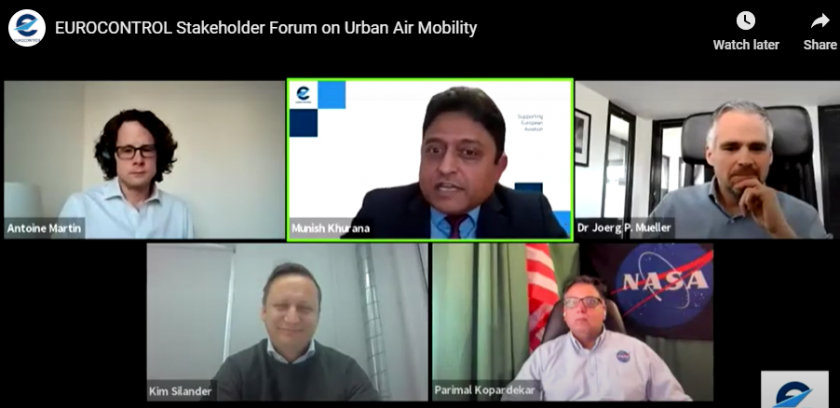By Jenny Beechener
“The aviation community talks to each other, however we have no idea how to deal with the municipalities. This is a big, big problem. The municipalities likewise have no idea what we are doing,” said Kim Silander, CEO and founder of Independent Business Group (IBG) of Sweden during the webinar on the role of Unmanned Aerial Mobility (UAM) in future mobility hosted by Eurocontrol on 4 February 2021.
Sweden has 290 municipalities, each with a different structure, and the challenge this presents can only be overcome by involving them directly in UAM projects to help to create standards, said Kim Silander. Consequently, a demonstration autonomous eVTOL flight planned between Linkӧping and Norrkӧping as part of the SESAR CORUS project includes heavy involvement from both municipalities in the consortium led by Sweden’s air navigation service provider alongside IBG and Norrkӧping universities.
France is also engaging all stakeholders to help overcome the many challenges facing safe, secure and socially acceptable UAM in an urban environment explained Antoine Martin, DSNA ATM/U-space Services Director. DSNA has initiated a series of projects involving a wide range of participants. These include the Vilagil Ecosystem for Mobility at Francazal Airport close to Toulouse, which “brings together all the major stakeholders around the same table”. Meanwhile the sandbox testbed at Pointoise Airfield near Paris includes over 30 partners and plans to build commercial urban services in time for the 2024 Paris Olympic Games. “The project addresses all key challenges such as development of the vehicle, the ground infrastructure, design of the vertiport, airspace integration, and demonstrate CORUS-XUA concepts,” said Antoine Martin. “We already have eight partners in the DSNA U-space Together programme, and we will launch a new call to provide UTM services at low altitude at locations across France within the next month.”
Meanwhile the US NASA Aeronautical Research Institute (NARI) has set up a series of projects addressing specific areas. NARI Director Parimal Kopardekar explained: “One is focused on the aircraft, for example figuring out what is an acceptable level of noise. A second is looking at methods that will ensure the safety of these operations. Another is focused on integration of airspace and UTM so that it will be possible to scale operations without overloading the current ATM system. Another is demonstrating through a national campaign how airspace, aircraft and infrastructure fit together. We are also building a modelling simulation toolkit to assess the vertiport needs based on zoning restrictions, access to power, surface transport, weather data and many other factors.” This research is supported by working groups looking at aircraft, airspace, communications, infrastructure, community and supply chains in the ecosystem. “To ensure all these pieces are ready at the same time, we capture progress on each based on six UAM Maturity Levels (UMLs) with the aim of achieving adequate progress across the whole ecosystem.” NASA is also planning more international events to increase collaboration on all these fronts.




